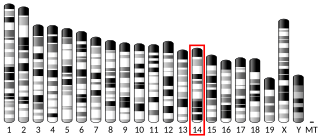Vitamin C is an essential nutrient, the compound L-ascorbic acid.
Vitamin C may also refer to:
- Vitamin C (singer), an American pop music singer, dancer and actress
- Vitamin C (album), her debut album
- "Vitamin C" (song), a song by Can
Vitamin C is an essential nutrient, the compound L-ascorbic acid.
Vitamin C may also refer to:

Ascorbic acid is an organic compound with formula C
6H
8O
6, originally called hexuronic acid. It is a white solid, but impure samples can appear yellowish. It dissolves well in water to give mildly acidic solutions. It is a mild reducing agent.

Scurvy is a disease resulting from a lack of vitamin C. Early symptoms of deficiency include weakness, feeling tired and sore arms and legs. Without treatment, decreased red blood cells, gum disease, changes to hair, and bleeding from the skin may occur. As scurvy worsens there can be poor wound healing, personality changes, and finally death from infection or bleeding.

Vitamin C is a water-soluble vitamin found in citrus and other fruits and vegetables, also sold as a dietary supplement and as a topical 'serum' ingredient to treat melasma and wrinkles on the face. It is used to prevent and treat scurvy. Vitamin C is an essential nutrient involved in the repair of tissue, the formation of collagen, and the enzymatic production of certain neurotransmitters. It is required for the functioning of several enzymes and is important for immune system function. It also functions as an antioxidant. Most animals are able to synthesize their own vitamin C. However, apes and monkeys, most bats, some rodents, and certain other animals must acquire it from dietary sources.
ATC code A11Vitamins is a therapeutic subgroup of the Anatomical Therapeutic Chemical Classification System, a system of alphanumeric codes developed by the World Health Organization (WHO) for the classification of drugs and other medical products. Subgroup A11 is part of the anatomical group A Alimentary tract and metabolism.
Redoxon is the brand name of the first artificially synthesized ascorbic acid. Redoxon was first marketed to the general public by Hoffman-La Roche in 1934, making it the first mass-manufactured synthetic vitamin in history. The brand is now owned by German pharmaceutical company Bayer and is sold in many countries.

Erythorbic acid is a stereoisomer of ascorbic acid. It is synthesized by a reaction between methyl 2-keto-D-gluconate and sodium methoxide. It can also be synthesized from sucrose or by strains of Penicillium that have been selected for this feature. It is denoted by E number E315, and is widely used as an antioxidant in processed foods.
Dehydroascorbic acid (DHA) is an oxidized form of ascorbic acid. It is actively imported into the endoplasmic reticulum of cells via glucose transporters. It is trapped therein by reduction back to ascorbate by glutathione and other thiols. The (free) chemical radical semidehydroascorbic acid (SDA) also belongs to the group of oxidized ascorbic acids.

L-Gulonolactone oxidase is an enzyme that produces vitamin C, but is non-functional in Haplorrhini, in some bats, and in guinea pigs. It catalyzes the reaction of L-gulono-1,4-lactone with oxygen to form L-xylo-hex-3-gulonolactone (2-keto-gulono-γ-lactone) and hydrogen peroxide. It uses FAD as a cofactor. The L-xylo-hex-3-gulonolactone then converts to hexuronic acid spontaneously, without enzymatic action.

Mineral ascorbates are a group of salts of ascorbic acid. They are composed of a mineral cation bonded to ascorbate.

Ascorbyl palmitate is an ester formed from ascorbic acid and palmitic acid creating a fat-soluble form of vitamin C. In addition to its use as a source of vitamin C, it is also used as an antioxidant food additive. It is approved for use as a food additive in the EU, the U.S., Canada, Australia, and New Zealand.

Sodium ascorbate is one of a number of mineral salts of ascorbic acid (vitamin C). The molecular formula of this chemical compound is C6H7NaO6. As the sodium salt of ascorbic acid, it is known as a mineral ascorbate. It has not been demonstrated to be more bioavailable than any other form of vitamin C supplement.

"Graduation " is a song by American pop singer Vitamin C, released as the third single from her self-titled debut studio album (1999). Vitamin C wrote the song as a response to how many friends drift apart soon after graduation from high school. Josh Deutsch co-wrote the song with her and also produced the track alongside Garry Hughes. The song is partly orchestrated, featuring a string arrangement based on Pachelbel's Canon in D and a vocal appearance from the NYC All-City Chorus. One version of the song contains student interviews from the Class of 2000 of Lyndhurst High School in New Jersey.

2,6-Dichlorophenolindophenol is a chemical compound used as a redox dye. When oxidized, DCPIP is blue with a maximal absorption at 600 nm; when reduced, DCPIP is colorless.
The molecular formula C6H8O6 (molar mass: 176.124 g/mol) may be:
Hexuronic acid is any uronic acid derived from a hexose. These include fructuronic acids, galacturonic acids, glucuronic acids, guluronic acids, iduronic acids, mannuronic acids, and tagaturonic acids.

Vitamin C megadosage is a term describing the consumption or injection of vitamin C in doses well beyond the current United States Recommended Dietary Allowance of 90 milligrams per day, and often well beyond the tolerable upper intake level of 2,000 milligrams per day. There is no scientific evidence that vitamin C megadosage helps to cure or prevent cancer, the common cold, or some other medical conditions.

Solute carrier family 23 member 2 is a protein that in humans is encoded by the SLC23A2 gene.

Solute carrier family 23 member 1 is a protein that in humans is encoded by the SLC23A1 gene.

Intravenous Ascorbic Acid, is a process that delivers soluble ascorbic acid directly into the bloodstream. It is not approved for use to treat any medical condition.